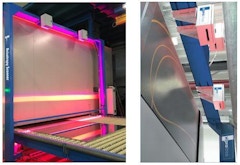
End-of-Life Challenges in Facade Design
In recent decades, there has been increased attention to reduce the operational energy performance of buildings. Stringent legislation on building

In recent decades, there has been increased attention to reduce the operational energy performance of buildings. Stringent legislation on building

Architectural preferences for commercial building continue towards increased transparency resulting in large lites of glass with minimal visual

Architects and facade planners require that anisotropies or haze, optical phenomena disturbing the clear appearance of a glass, have to be avoided


We are excited to announce the launch of our video library featuring a selection of past live event recordings now available, exclusively to FTI members. Our events bring international audiences together to explore industry issues, trends, and emerging technologies as they relate to buildings...

A small team of digital designers at the Schüco Virtual Construction Lab (VCL) in NYC is developing a new way for clients to experience and evaluate facade products. The VCL will be demonstrating the technology at the conference in Los Angeles on March 12-13.

Glass is a key component in building design. Benefits of utilizing Insulating Glass Units (IGUs) within a building facade are well understood,

Responsive facade system is considered a major component of high-performance building envelope that is capable of responding to environmental stimuli


An innovative lightweight ceramic precast composite panel is introduced in this paper that offers the unique benefits of prefabricated off-site

The 71Above restaurant on the 71st floor of the U.S. Bank Tower features 192 electrochromic windows installed by Giroux Glass, Inc. Explore the sensory experience made possible by glazing choices and why we’re apt to see more tech-driven smart window installations in the future.
Adaptive facade systems are a promising approach to achieve a dynamic response to varying weather conditions and user demands. The interdisciplinary
There is history to this new enterprise. Facade Tectonics started as a series of invited roundtable discussions at the University of Southern California School of Architecture in 2007 as a strategic response to the escalating importance and complexity of building facade technology. These roundtable